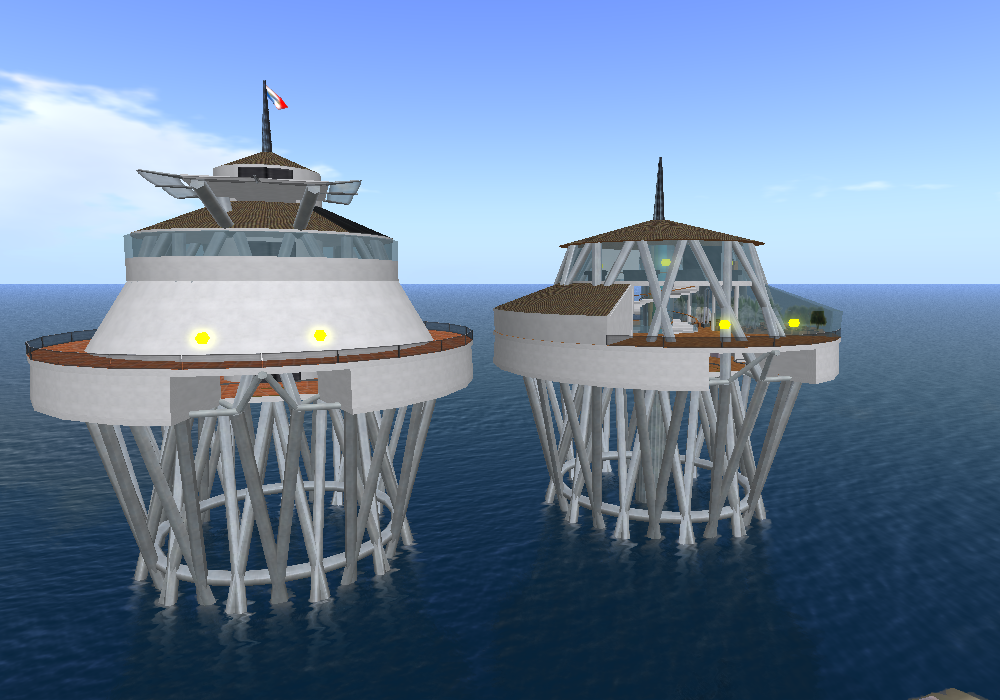|
|
| (10 intermediate revisions by the same user not shown) |
| Line 1: |
Line 1: |
| | * [[User:Jesrad/BunkerStead]] | | * [[User:Jesrad/BunkerStead]] |
| | * [[User:Jesrad/AtmosphericElectricity]] | | * [[User:Jesrad/AtmosphericElectricity]] |
| | + | * [[User:Jesrad/FloatingDirtSeastead]] |
| | | | |
| − | Jesrad is a diplomed Systems and Networks engineer, a certified Discordian Pope and an enthusiastic amateur lateral-thinker.
| + | ---- |
| | + | ''mid-2013 status update:'' |
| | | | |
| | + | Half of Europe's countries, including France where I reside, are going down the financial, cultural and moral drain at an accelerating rate. My limited family's financial, medical and professional anchors to this place are almost all loose now, enough so that any alternative for income appearing abroad (in any non-borked place) will be enough to trigger our immediate and irrevocable migration. However the national government here has been keeping us (and every other middle-class family in the country) financially strangled for over a year now, and that means I cannot contribute to funding seasteading until some time after I move, which creates a kind of catch-22 situation regarding migration to a potential experimental seastead. For shame, otherwise I'd take the opportunity to combine our migration with the current Floating-City campaign to establish a proof-of-concept live experiment (although, TBH I find the choice of locating it in the USA a bit apalling and short-sighted). |
| | + | |
| | + | I believe the seasteading movement/culture needs a few low-profile live experiments, now is the right time. I would gladly help any initiative, in any way I still can. |
| | + | ---- |
| | + | Secondlife has been dead to me since I was shafted by LindenLab in 2009. The collaborative design concept still lives though thanks to open-source clones like opensimulator and alternative clients, for rapid virtual-prototyping and making sexy pictures. |
| | + | |
| | + | [[Image:Artififloatisland01.jpg]] |
| | + | [[Image:Artififloatisland02.jpg]] |
| | + | [[Image:Artififloatisland03.jpg]] |
| | + | [[Image:Artififloatisland04.jpg]] |
| | + | [[Image:Artififloatisland05.jpg]] |
| | + | [[Image:Artififloatisle06.jpg]] |
| | + | [[Image:Artififloatisle07.jpg]] |
| | + | * [[Image:DHTMCsteads.png]] |
| | + | ---- |
| | + | Jesrad is a diplomed Systems and Networks administrator, a certified Discordian Pope, a nutrition and health adviser, a technology history scholar and an enthusiastic amateur lateral-thinker. |
| | ---- | | ---- |
| | | | |
| Line 19: |
Line 37: |
| | | | |
| | The weighted average of the total cost of land for each such person is (formula here), which is, for actual competitive purposes when comparing traditional land lifestyle against seasteads, a more accurate target for design-to-cost approaches. | | The weighted average of the total cost of land for each such person is (formula here), which is, for actual competitive purposes when comparing traditional land lifestyle against seasteads, a more accurate target for design-to-cost approaches. |
| − |
| |
| − | ==The Floating Dirt seastead==
| |
| − |
| |
| − | ''Dirt is extremely cheap. Therefore, if dirt can be given positive buoyancy, then floating dirt may make floating islands cheap enough.''
| |
| − |
| |
| − | The principle behind the Floating Dirt Seastead is to mash together ideas like the [[Artificial Atoll]], the [[User:Joep/MudCurtain|Mud Curtain]] and the [[User:Joep/Disposable land|Disposable Land]] proposals, in order to make a large floating, artificial island to settle upon.
| |
| − |
| |
| − | ===Comparison with ordinary islands===
| |
| − | Settling an island is an established possibility for homesteading the seas, however it usually comes with several disadvantages in the mid- and long-term:
| |
| − | * Isolation from the continent means higher prices on imports and exports
| |
| − | * Very limited expansion ability as, once the entire island is developped there is no more land available
| |
| − |
| |
| − | The Floating Dirt seastead carefully avoids these two problems: by being mobile, it can be brought to the continent for the purpose of reducing import and export costs semi-permanently or on a regular schedule ; and by being artificial it can be easily expanded by producing and adding more floating dirt to the ensemble.
| |
| − |
| |
| − | Therefore, a Floating Dirt seastead should be able to combine the comparative advantages islands have as a place to live in, without incurring their disadvantages.
| |
| − |
| |
| − | ===Design constraints===
| |
| − | A Floating Dirt seastead should be robust enough to survive the ocanic environment and its severe storms either by resisting wind and waves directly, or by being able to take damage from those. The latter solution is preferred so as to focus on the one main characteristic of this seastead design: dirt-cheap artificial land. To this effect the Floating Dirt seastead is made of two parts: the inhabitable main "land", and its breakwater/atoll. The former is destined to shoulder wave damage, while the latter aims at resisting wind damage. The main component of the floating dirt itself has to be made from a material that resists corrosion from seawater.
| |
| − |
| |
| − | Some method for attaching something to the bulk floatation material is required - presumably, some sort of net, rope or support plate. This might usefully double as a mechanism for keeping the blocks together even through heavy deformation of the structure under large stress. Must not "fall through the island" under the constant motion of the sea.
| |
| − |
| |
| − | An alternative is to use the same kind of building blocks, but with a variable size: piles upon piles of small blocks on the outside, bigger elements sticking together on the inner side, with larger elements in the middle, and elements large enough to have something tied to them, at the center.
| |
| − |
| |
| − | ====Taking wave damage gracefully====
| |
| − | The outer part of the seastead should be able to take large hits from big waves and other collisions, and transform most of the momentum into splashes (by resisting and thus reflecting the stress onto the incoming water or object) and/or into plastic deformation or internal viscous drag (rearranging its elements over and over with the waves, ideally in a perpetual cycle of outer-most blocks being piled back onto the inner-most then crumbling back into shape).
| |
| − |
| |
| − | Because waves contain an amount of energy that grows with the square of their height, the larger waves are extremely dangerous and deal an amount of stress that we must (over)size the island after. A Floating Dirt seastead sized for open ocean might require a radius of "splash zone" up to half a wavelength of the highest wave it might encounter, which can reach up to 300 meters and more, meaning this zone's width may easily need to be 100 meters or more. Simply said, facing oceanic waves may require oceanic beach-sized absorption zones. This is why lowering the cost of the building material is so important.
| |
| − |
| |
| − | This aspect imposes a high limit on down-scaling this design: viable seasteads of this sort start at a very large size and can only be made even bigger. Fortunately, absolute space comes in ample supply on the oceans, so the only truly important thing is the total cost of the structure, and not its final size.
| |
| − |
| |
| − | ====Resisting wind damage cheaply====
| |
| − | The simplest method for resisting wind is to use a low profile with a reduced frontal surface exposed to wind and a low drag coefficient. Another possibility is to use something to dampen or deflect the effect of wind, for example vegetation or artificial hills.
| |
| − |
| |
| − | ====Stability and seasickness====
| |
| − | By using an extremely cheap floatation material, a Floating Dirt seastead can afford a very high ratio of mass to net buoyancy which makes it extremely stable and comfortable. In addition the ablative approach chosen against wave and wind damage means most of the big stresses inflicted upon the seastead are transformed into plastic deformations (and/or dissipated as internal viscous drag, if the building material is/contains a fluid) instead of being transferred to the structure as momentum, further increasing stability and comfort.
| |
| − |
| |
| − | The disadvantage here is that high mass-to-net-buoyancy means poor mobility, so a compromise between oversizing the island and speed must be found.
| |
| − |
| |
| − | ====Combining infrastructure and structure====
| |
| − | * Floatation can be obtained from fresh water, which is lighter than salt water, so fresh water tanks should be incorporated into the floating dirt structure, possibly deep under the water level so that Archimedes' force works to provide pressure in the pipes without requiring a water tower - vulnerable to wind and deleterious to stability.
| |
| − | * Vegetation useful as a food source might double as a barrier against wind, though it means potential losses of food to storms.
| |
| − |
| |
| − | ====Cost====
| |
| − | The one crucial design focus of this seastead design is on lowering the cost of the main construction material, preferably through mass-production using the cheapest base materials available in bulk. Recycling garbage such as used plastic bottles into floating dirt is a viable option. Moulding floating base elements from a cheap material such as concrete (or a buoyant equivalent) might do, too. Filling plastic bags or tubes with a mix of air and oil can, too.
| |
| − |
| |
| − | There are many ways to explore, but not all may provide a material that can fit the damage-absorbing requirement defined above. The ideal choice of building element is probably composed of a single material and not a composite, otherwise it might lose some of its properties under severe or localized stress.
| |
| − |
| |
| − | ''What we need here is some form of large grain of sand-like building blocks that can spontaneously stick together to some extent and have a small positive buoyancy. Hydrophobic material regroup together spontaneously in water, but not strongly enough to build upon. Many soft and sometimes porous materials might have the required mechanical features, but most of them rot away over time (tree bark chips)...''
| |
| − |
| |
| − | Potential material candidates:
| |
| − | * [http://www.euro-matic.com/hollow.html Hollow plastic balls], maybe with velcro for inter-stickiness ?
| |
| − | * Used plastic bottles, possibly inside plastic nets or encapsulated in concrete
| |
| − | * Bubble wrap packaging
| |
| − | * ''Your Product Here!''
| |
| − |
| |
| − | ====Modularity====
| |
| − | Expanding each part of the seastead (breakwater and main) should be as easy as pouring some more of the main building material at one end, and possibly pat it with a shovel (or run a rolling press over it) to make it compact enough. The plastic capability of the outer part should make it easy to join several such seasteads together without threatening their capacity to resist storms (the material acting as its own fender buoy). This also makes transboarding cargo and passengers to and from visiting boats extremely easy in most weathers.
| |
| − |
| |
| − | ===Notes on this design===
| |
| − | By taking the more traditional shape of an actual island, instead of near-boat or near-oil-rig shapes, this design might make it easier for the rest of the world to treat it as an independant piece of land and not a boat sailing under some existing nation's flag, in turn making it easier to have the independant sovereignty of its inhabitants recognized internationally. This might prove invaluable when moving through territorial (or claimed as such) waters. The legal arrangements reserved for embassies would ideally apply when the floating island stops by a port.
| |
| − |
| |
| − | Maximising the total size against the total value of the seastead discourages structural attacks. It is easy for an hostile navy to try and sink a boat-like seastead (or group of such seasteads), but no one in his right mind would attempt to sink an ''island''. Additionnally, a design that can shrug off damage from large storms can most probably shrug off damage from air bombings too.
| |
| − |
| |
| − | And lastly: this design is likely to produce the prettiest of all seasteads, once complete with their wide lush gardens and their long beaches fending gentle waves and their lagoons attracting exotic fishes.
| |
| − |
| |
| − | =Alternate Hard Floating Dirt seastead=
| |
| − | If a "soft" floating dirt structure is not robust enough for open ocean, a hard one may be viable, if it is large enough to compensate for the loss of plastic deformation.
| |
| − |
| |
| − | The idea is to build a large lens of some extra-cheap material with low positive buoyancy, in a pebble-stone shape starting at 250 meters diameter for around 40 meters of height, basically mimicking the top of [http://www.photo.fr/laterre/asieoceanie/photos/maldives/maldives2b.jpg existing small islands]. Dry construction is possible by simply digging a hole of suitable shape and size, placing the optional rebar net, hardpoints, tubes and tanks and coffers for "basement" rooms, and pouring in the concrete, then letting in the sea and floating the entire thing away.
| |
| − |
| |
| − | * Stability is provided by the high width-to-height ratio and the extreme inertia
| |
| − | * Buoyancy may be provided by using a floating material or embedding floatation inside the structure (empty plastic bottles)
| |
| − | * The round, soft lens shape and the large size ensure this design can survive any storm
| |
| − | * The structure can include all sorts of hard-points for affixing infrastructure, and can house inner tanks or even "basement" rooms (adding to the overall buoyancy)
| |
| − | * Cost is driven up by the enormous amount of construction material required, and down by the extreme simplicity of designing and building this seastead
| |
| − |
| |
| − | This design is basically an oversized and simplified [[User:Vincecate/GeodesicVessel|Geodesic Vessel]].
| |
| − |
| |
| − | ==Two-part hard design==
| |
| − |
| |
| − | The "hard" version of Floating Dirt seastead can, too, be built in two seperate parts by simply carving a circular gap around the middle section of the "lens" so that it floats inside a slightly larger hole within the rest of the seastead, giving it several degrees of freedom from it: <(O)> The outer shell then acts as a breakwater for the center part, maintained in place by a few large balls of foam or inflatable rubber.
| |
| − |
| |
| − | This solution comes down to a breakwater bay with a large ballstead within. Any range of size and thickness of either part may prove practical ultimately.
| |
mid-2013 status update:
Half of Europe's countries, including France where I reside, are going down the financial, cultural and moral drain at an accelerating rate. My limited family's financial, medical and professional anchors to this place are almost all loose now, enough so that any alternative for income appearing abroad (in any non-borked place) will be enough to trigger our immediate and irrevocable migration. However the national government here has been keeping us (and every other middle-class family in the country) financially strangled for over a year now, and that means I cannot contribute to funding seasteading until some time after I move, which creates a kind of catch-22 situation regarding migration to a potential experimental seastead. For shame, otherwise I'd take the opportunity to combine our migration with the current Floating-City campaign to establish a proof-of-concept live experiment (although, TBH I find the choice of locating it in the USA a bit apalling and short-sighted).
I believe the seasteading movement/culture needs a few low-profile live experiments, now is the right time. I would gladly help any initiative, in any way I still can.
Secondlife has been dead to me since I was shafted by LindenLab in 2009. The collaborative design concept still lives though thanks to open-source clones like opensimulator and alternative clients, for rapid virtual-prototyping and making sexy pictures.
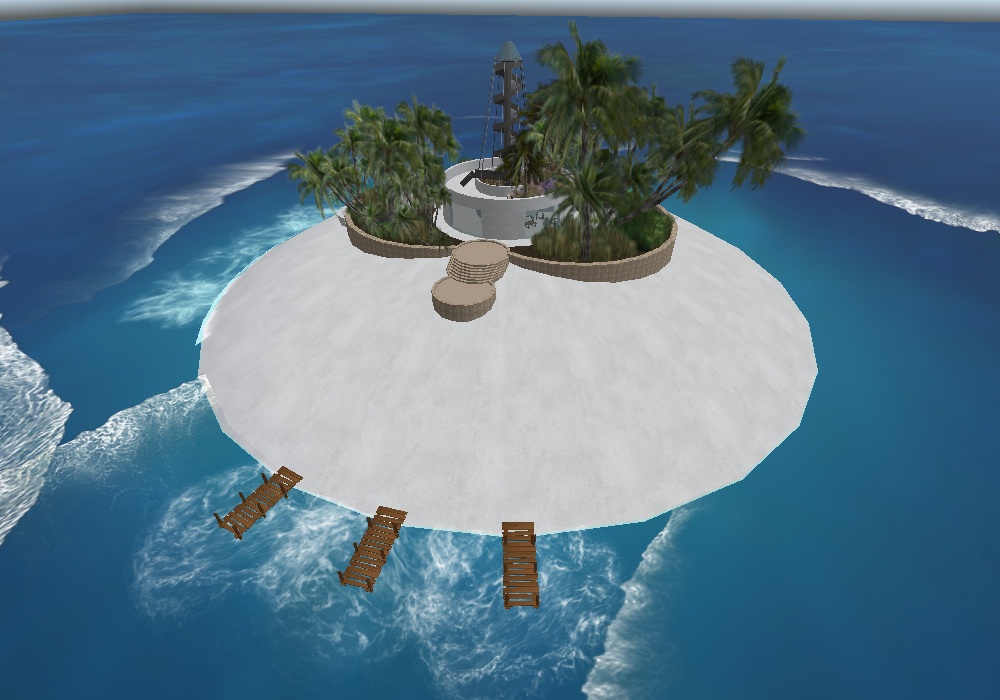
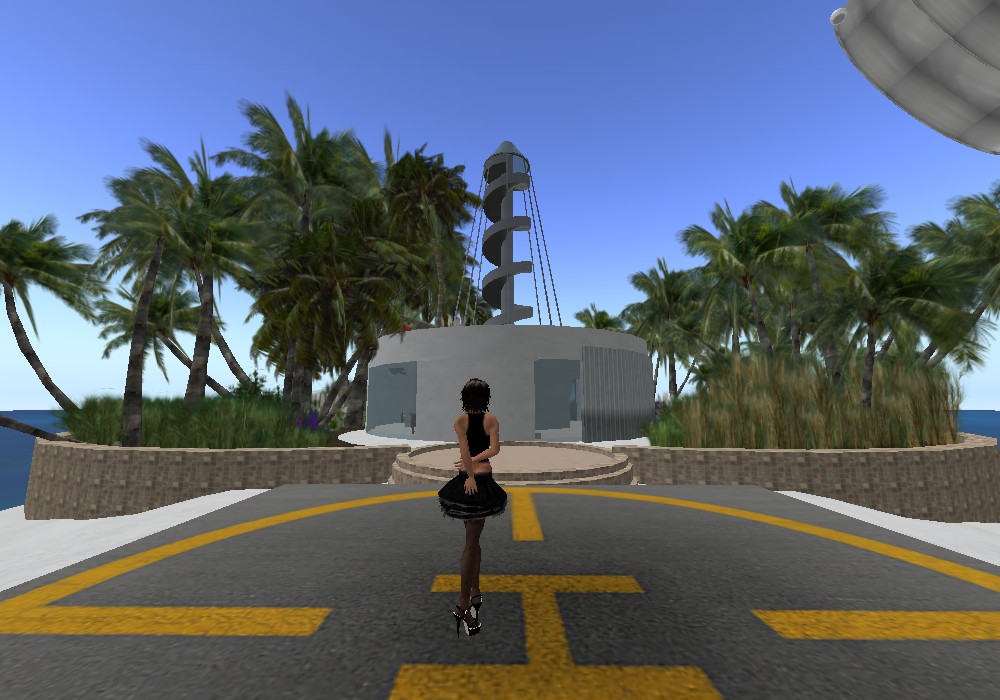
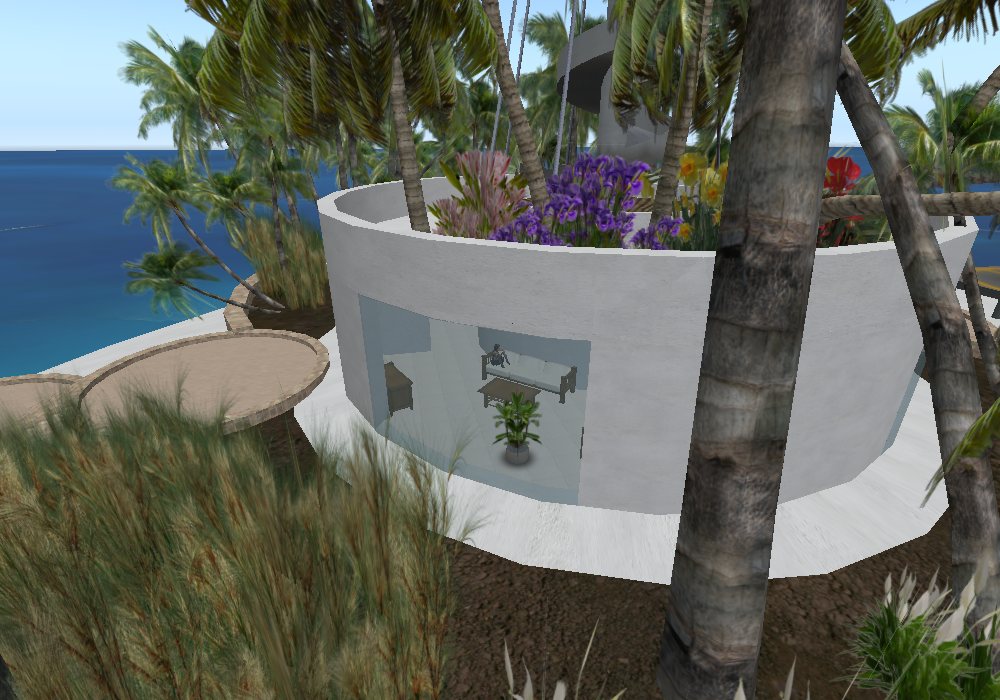
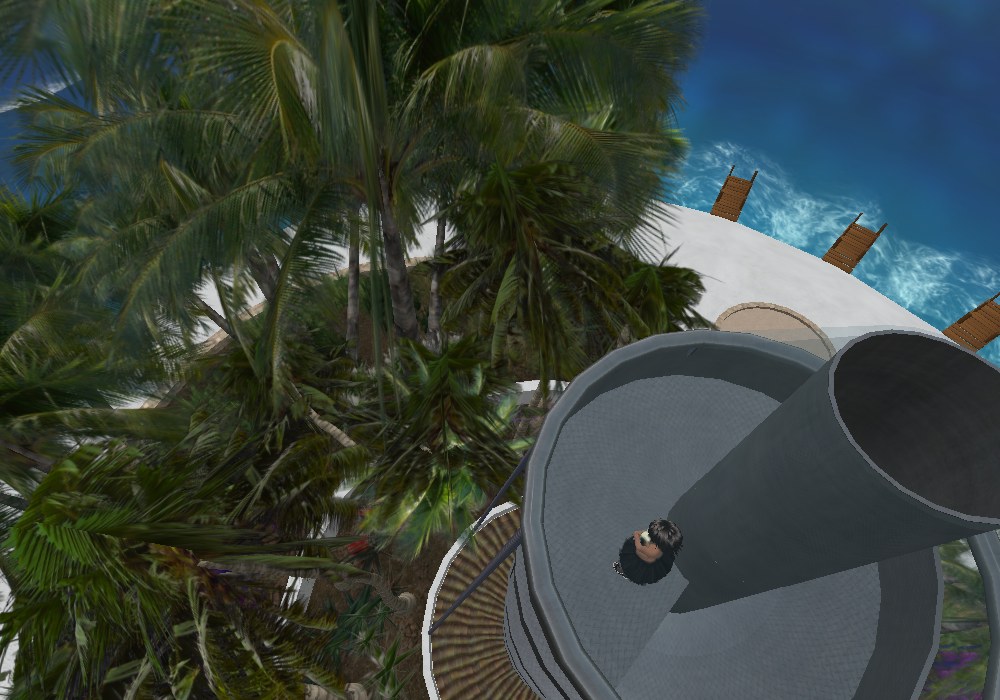
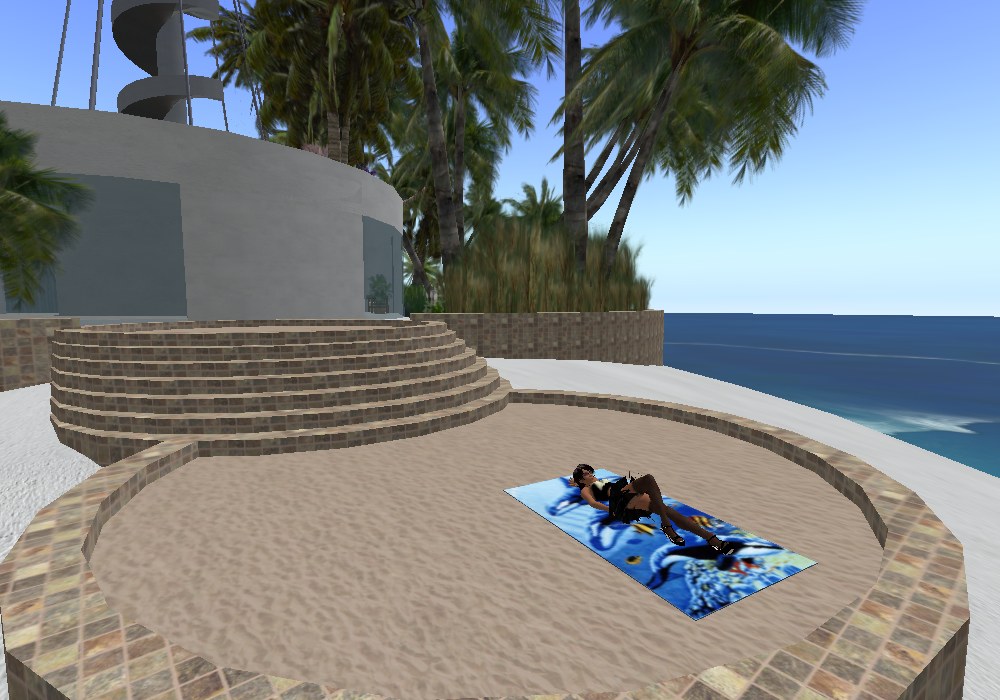
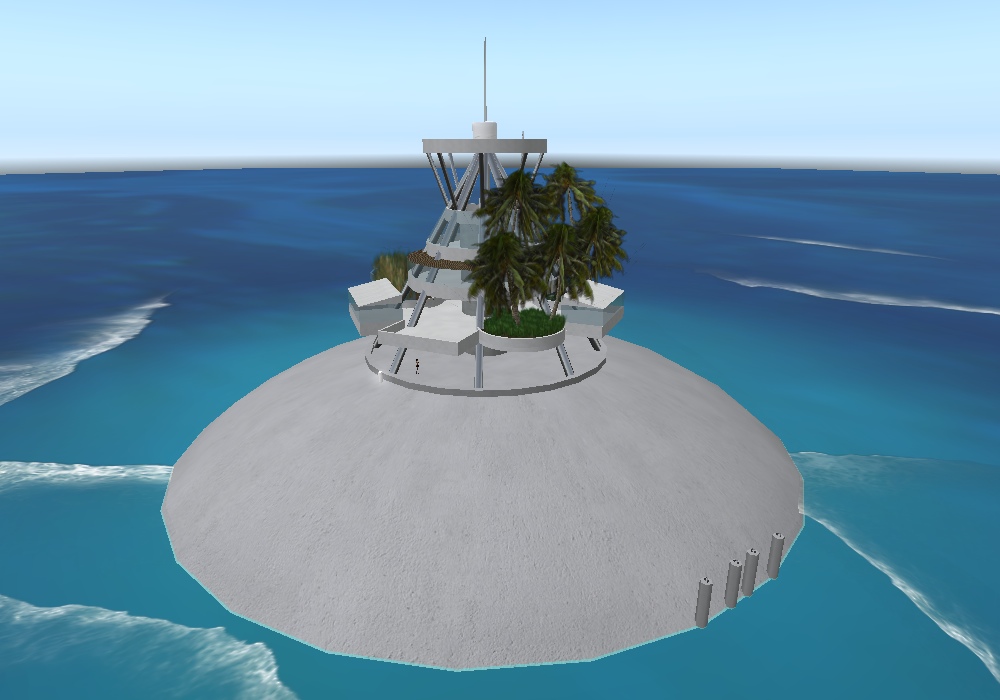
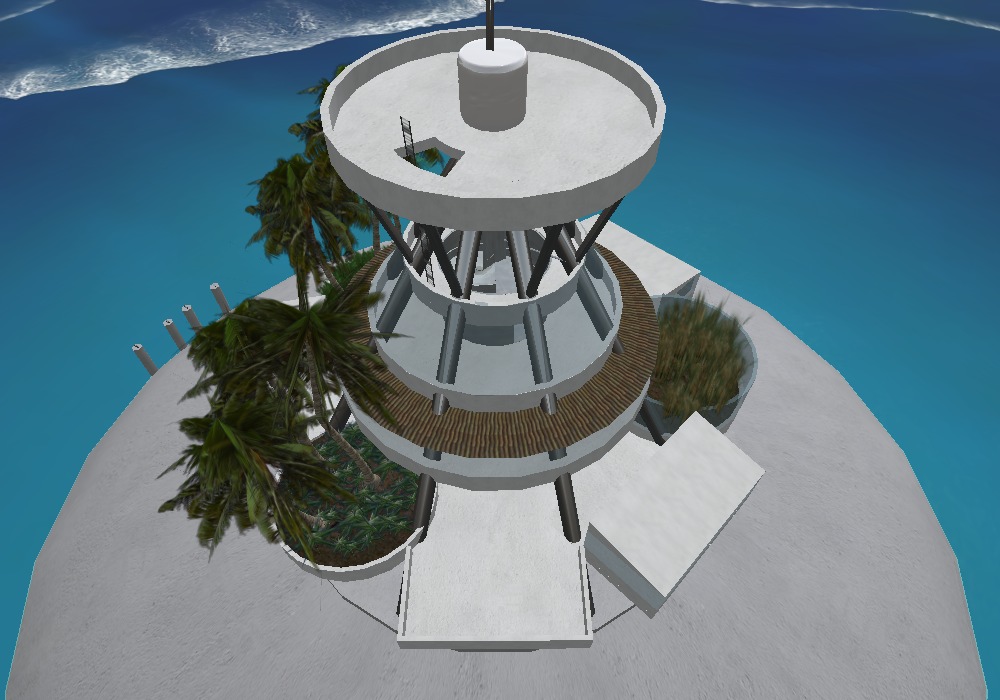
Jesrad is a diplomed Systems and Networks administrator, a certified Discordian Pope, a nutrition and health adviser, a technology history scholar and an enthusiastic amateur lateral-thinker.
Work in progress:
Land and sea cost to surface comparisons
While the cost of the residential square meter of seastead may compare favorably to the cost of residential square meter of downtown flats in many big cities, any attempt at designing seasteads with cost in mind should integrate also comparisons of non-residential acreage in both settings.
Land residents in big cities have easy access to such non-residential land surface through the extensive land transportation systems: the ordinary western citizen makes use of the following averages of surfaces depending on their productive uses:
- N square meter for crop culture
- M square meter for stock breeding and rising
- O square meter for industrial applications
- P square meter for refuse and waste treatment or storage
- Q square meter for ?
- Your Ad Here
The weighted average of the total cost of land for each such person is (formula here), which is, for actual competitive purposes when comparing traditional land lifestyle against seasteads, a more accurate target for design-to-cost approaches.







